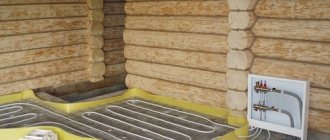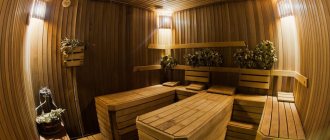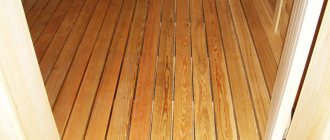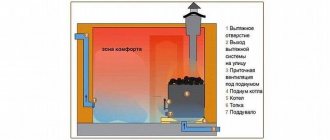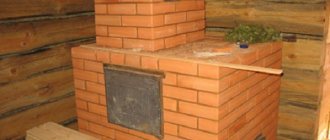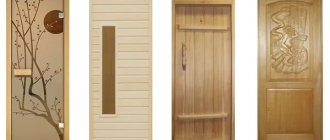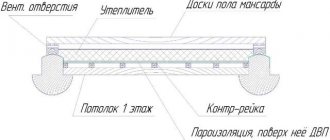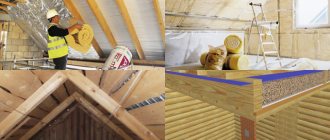Today everyone can afford to have their own steam room on their plot or dacha. But, in addition to the pleasant prospects provided by the bathhouse, a number of questions arise about how to organize the wiring in the bathhouse with your own hands. The main stumbling block in this matter is the high humidity and temperature in the room, classifying it as particularly dangerous according to clause 1.113 of the PUE.
Under such unfavorable conditions, electrical appliances and other elements of the electrical network very quickly break down and fail, and dielectric materials become covered with a layer of conductive moisture. This creates a significant risk of electric shock in emergency situations. Therefore, in order to carry out electrical wiring and other electrical installation work in the bathhouse in accordance with current standards, it is necessary to study the requirements of the PUE.
Requirements according to PUE 7
According to clause 2.1.4 of the PUE, installation of electrical wiring can be carried out in an open or hidden way. This separation of the wiring in the bathhouse is relevant for various types of walls, when it is possible to develop grooves or in the absence of them.
Due to the fact that some rooms are fire hazardous, and wet rooms contain a large amount of condensate, when laying wires in an open or hidden way, all lines must be protected from non-combustible material in accordance with clause 2.1.42 and from moisture in clause 2.1.43 of the PUE.
When wires are placed openly, for example, on wooden walls, the non-combustible lining under them should protrude 10 mm in each direction. It is also necessary to maintain a 10 mm gap from the wire to flammable materials in accordance with clause 2.1.37 of the PUE. For hidden wiring, a fireproof coating is located along the entire length in accordance with clause 2.1.38 of the PUE. But placing wiring in a metal pipe or corrugation is strictly prohibited in accordance with the requirements of 7.1.40 PUE.
In order to maintain safety, all metal structures - housings of lamps, heating stoves, household appliances, etc. must be connected to the protective grounding in the bathhouse wiring, the conductors must be double insulated, the circuit elements must be inaccessible. To protect a person from electric shock, an RCD must be installed in the electrical panel. These measures are specified by the requirements of clauses 1.7.50 and 1.7.51 of the PUE. It should be noted that when lighting devices and other devices are powered with low voltage in accordance with clause 1.7.53, the Electrical Electrical Installation can be carried out without installing protective grounding.
Advice from professionals
We recommend paying attention to the following points:
- A common mistake is installing a non-built-in regulator for the electric heater in the steam room. This can be corrected by installing a limiter that will automatically disconnect the equipment from the network when it reaches 140 degrees.
- In the steam room and shower there should not be any connections consisting of several pieces of cables twisted together. Any violation in the insulation is a risk of a sudden short circuit in the wiring and fire.
- To save money, owners often lay the cable directly above the stove. This is prohibited by fire safety regulations. No matter how heat-resistant the cable turns out to be, there is always a risk of deformation and fire if there is constant exposure to high temperatures.
- When there are many machines, it is unsafe. Many masters assure owners that the more machines installed in the bathhouse for each equipment, the lower the risk of network overload. But practice shows the opposite. The slightest poor-quality connection will cause a short circuit - it is enough to secure one circuit breaker at the input, which will turn off the power if the permissible load is exceeded.
Laying an electrical cable is a critical stage in the construction of a bathhouse. An attempt to undertake installation without knowledge and experience threatens with dire consequences, including a fire. There is no need to skimp on material here. For advice and permission, it is better to immediately contact the responsible service. You should entrust the installation work to electricians or do it yourself, but under their guidance.
What mains voltage should I choose?
Due to the different needs for providing the required level of power, the wiring in the bathhouse can power both lighting fixtures, and then in small spaces, and powerful equipment. Because of this, the type and level of voltage used differs:
- Single-phase network e - used at an average level of load on the wiring in the bath from 1 to 14 kW. In this case, the entire bathhouse is powered from single-phase networks with a voltage of 220 V.
- Three-phase network - used for a wiring load in a bathhouse from 20 to 40 kW, when an electric stove, heated floor and other powerful electrical appliances (water heating boilers, pumps, etc.) are connected to the bathhouse.
- Single-phase low - allows you to power the bathhouse with a safe voltage of 12 V or 36 V, which can be used to illuminate the steam room in the bathhouse without endangering people. Relevant for small baths with low ceilings, in which the only consumer for the leash is the lighting system.
After selecting the voltage level, a wiring diagram is drawn up taking into account the locations of all consumers.
Useful video
A very visual and practical video that talks specifically about bathhouse electrification - we hope that it will be useful to many:
*** Just in case, if you are interested in manual labor , we will recommend you another material indirectly related to electricity in the bathhouse - an article about what types of lampshades for bath lamps there are and how to make them with your own hands.
For more materials on wiring, see the sections on lighting and lamps.
How to build a bathhouse, How to make a steam room, Steam room in a bathhouse, Steam room, Lamps for saunas and baths · 08.20.2018 · 5
Circuit design
To draw up a wiring diagram for a bathhouse, you need to decide on the number of connection points to it - lighting devices, sockets for specific equipment, switches, etc. It should be noted that switches, like distribution boxes, are strictly prohibited from being installed in the steam room; they must be located in the locker room or dressing room. Washing is also not suitable for this due to the presence of moisture. The wiring in the steam room cannot be closer to the stove or chimney than 80 cm; these requirements must be taken into account at the design stage.
Figure 1: simple wiring diagram in a bathhouse
Look at the picture, here is one of the simple examples of electrifying a bathhouse. The wiring is connected to two independent terminals, each powering its own socket and a group of lighting lamps. This option will help you calmly leave the room if a short circuit occurs in one of the sections, since there are often no sources of natural light.
If you plan to install specific equipment, for example, a water heating boiler or a washing machine, you should provide a separate line for them in the wiring diagram with a larger cross-section than for a lamp. The washing machine and boiler must be installed in dry conditions. In this case, they should also be shown separately on the wiring diagram.
Precautions when wiring
- All devices and shields must be located in a separate room, which is reliably protected from moisture. In conditions of excessive humidity, structures can fail and rust in a short time. This also applies to plastic devices - there are metal elements inside the structures. There is no need to worry about modern models of shower cabins with built-in water heating. The manufacturer cares about safety, so such devices can also be placed in a washing room.
- The body of the lighting fixtures should be aluminum, and the lampshade should be glass. It is recommended to mount them on the walls, since steam escapes to the ceiling, as a result of which an elevated temperature is established there, which is unacceptable for such devices.
- The transformer device to which the supply voltage will be supplied must be designed for 220 V. It must be installed in a dry place. Only 12 V can be wired through the wall. If 36 V light bulbs are installed, then the permissible voltage will be 42 V.
In the steam room, it is recommended to install 12 V lamps, and place the power supplies for them behind the wall, in other rooms
- If you want to install a washing machine in a steam room, then do not forget that it should be placed in a dry room. You will need to make a separate cable for the electric heater.
- A grounding loop should be laid around the steam room. A circuit breaker or RCD must be installed in the panel. The devices must be located in a container that is protected from moisture.
- If there is a need to install sensors to an electric heater, then you should know that they must be low-voltage and located at a distance of 1 m from the floor base. The control panel is mounted outside the steam room. The heater is installed without sockets.
- It is recommended to mark all elements on the shield with a marker.
Video: types of bath lamps
Selection of wires, switches, lamps
For the completed wiring diagram in the bathhouse, all its components are selected: wires, sockets, switches and lamps. The cable brand is selected in accordance with the conditions in each of the bathhouse rooms (high temperature and humidity).
Depending on the material of the current-carrying conductor, the wiring in the bathhouse can be copper or aluminum, but due to the much better mechanical and electrical parameters, the choice should be made in favor of copper wires. The main parameter for any cable brand is the wire cross-section. The cross-sectional area is selected based on the load connected to the corresponding section of the wiring.
How to choose wires and sockets based on load?
For example, you are going to connect two 100 W light bulbs, plug in a 1 kW electric kettle and a 4 kW electric heated floor. Thus, to calculate the cross-section, add up the power consumption of all consumers P = 0.1 + 0.1 + 1 + 4 = 5.2 kW. To the resulting power value it is necessary to add a 20 - 30% safety margin, for our example we get 6.24 kW. To select a specific cross-sectional value for wiring based on consumer power or electric current, you need to use our calculator or table data:
Table 1: selection of wire cross-section
Look at the table; for a power of 6.24 kW, copper wiring with a core cross-section of 4 mm2 or aluminum wiring of 6 mm2 is suitable. If you have drawn up a power supply diagram with separation of wiring for different consumers, then it is advisable to perform the procedure for calculating the cross-section for each individual section, but the material of the conductor for the wiring must be the same.
The socket, like the wiring, has a certain current carrying capacity. Therefore, the selection of connection points to the mains voltage should be made in accordance with the devices being connected. For example, for a refrigerator it is enough to install a 10 A socket, but for a boiler, depending on the power, you will need 16 or 24 A.
For the steam room
The requirements of GOST R 50571.12-96 establish the following division of the steam room into zones:
Rice. 2: division of steam rooms into zones
Look at the picture, all zones are built in accordance with the location of the stove, be it electric or solid fuel. In relation to laying wiring cables and installing other equipment, these areas have the following requirements:
- The first is intended exclusively for the stove, if it is an electric heater, then the wiring for connecting it;
- The second is considered the most loyal in terms of wiring requirements; no standards are provided for it;
- For the third zone, there are requirements for equipment that must normally withstand temperatures of 125°C or more, and wiring of 170°C or more;
- Only lamps, sensors and regulators can be installed in the fourth zone, but their wiring is selected as for the previous bath zone.
For internal electrical wiring in the steam room, heat-resistant cables should be used, for example, flexible copper RKGM, PVKV, PRKS or PMTK.
Lamps in the steam room must have a metal body to which grounding is connected, a sealed glass shade with a degree of protection of at least IP24. You should not choose models with a plastic body or parts to connect lamps, as they can melt and deform, causing moisture to penetrate inside.
Rice. 3: steam room lamp
For dressing room, locker room, rest room
These premises are characterized by much less stringent requirements for location and wiring characteristics. But they must also comply with all the requirements of the PUE for saunas.
It is also better to use lighting devices that are sealed with a degree of protection of at least IP24, but you can also use models with a polymer body or made of plexiglass, since the temperature in these rooms is much lower. VVGng-LS brand wires are quite suitable for wiring. Sockets must have a protective locking device that prevents the free penetration of moisture from the environment.
Protection class of electrical equipment in the steam room
All electrical products are divided into classes according to the degree of protection against foreign objects and water getting inside the housing. The marking is applied to the packaging and body of the product and consists of the IP designation and at least two numbers.
The minimum requirement for electrical components in the steam room for this parameter is IP24 .
The first number indicates the size of objects that should not fall inside the housing. For the number “2” these are particles with a size of no more than 12.5 mm.
The second digit defines the conditions under which water should not enter the housing. For “4”, splashes or drops falling at any angle to the product should not penetrate inside.
Decoding the degrees of protection of electrical equipment
Since IP24 is the minimum requirement, with increasing numbers in the marking it is also met. If the product has IP44, then it can also be used, but IP21 or IP20 is no longer possible.
The protection class is indicated on the housings of all electrical installation products without exception.
Wiring entry into the bathhouse: overhead or underground?
Depending on the method of introducing the cable into a stone or wooden sauna, a distinction is made between overhead and underground installation.
Rice. 4: example of laying an overhead line
The first option has a number of advantages - installation by air is carried out quite quickly and at a lower cost, except in cases where you need to install supports before a wooden building. For overhead installation, it is most important to use self-insulating wire (SIP), the number of cores in which is determined by the choice of three-phase or single-phase electrical wiring. The following distances must be observed:
- Between supports no more than 25 m;
- The height of the SIP cable entry into the building is at least 2.75 m;
- The sag distance of the boom to the ground is not less than 3.5 m.
Due to the fact that underground entry requires the development of a trench for laying the cable, this procedure takes much longer than aerial installation. But when laying the cable entry underground, the line itself is much less exposed to atmospheric factors and wind loads, and therefore lasts much longer.
Rice. 5: example of laying cable underground
When laying an underground input, the following requirements must be met:
- Electrical wiring is inserted through a metal bushing;
- In the trench, the cable is located freely, and not under tension;
Rice. 6: cable in ground - Laying depth of at least 0.8 m;
- An armored grade is used, for example, VBBShV.
In addition to the lengthy installation process, underground cable placement also requires additional measures to protect against accidental damage during excavation work near its route.
Wiring method: open or hidden?
The advantages of open wiring in a bathhouse include simplicity and speed of installation, the absence of labor-intensive preparatory work, and accessibility for repairs. The disadvantages of the open method of laying wiring include its damage and interference with the interior of the bathhouse.
The advantages of hidden wiring include much higher reliability and security of the wires along their entire length. Disadvantages of internal wiring include lengthy preparatory work and wall gating, which is not always possible.
Open cable routing
External cable routing is carried out in the form:
- wires on rollers;
- cables directly on the surface;
- in plastic cable channels;
- in corrugation;
- in the pipes.
But each of these methods has limitations for use depending on the material of the walls and the degree of flammability of the cables. Let's take a closer look at them.
Laying wires on rollers
This method copies the old electrical wiring that was used at the dawn of the country's electrification. Porcelain rollers are attached to the gasket path using a regular nail or self-tapping screw. The wires are twisted together and put on the recesses in these rollers. It looks kind of retro.
Installation of wires on rollers
But twisted two-core wires with this method can only be used in dry rooms. No matter how insulated they are, it is prohibited to use them in a bathhouse or sauna .
Open laying on surfaces
Cables sheathed in fire-resistant or non-combustible materials can be laid directly on the surfaces of any walls. If they do not satisfy this condition, then this method is only suitable for non-combustible walls.
Installation of cables with brackets
For installation, specially shaped plastic brackets are used, which have a recess for holding the cable and a hole for attaching to the wall. However, the cable does not have any additional protection, which is a serious drawback. The likelihood of mechanical damage to the cable in a bathhouse is negligible compared to outbuildings. But who will give an absolute guarantee that this will always be the case?
Another drawback is the low aesthetics of the resulting structure.
Laying cables in channels
Plastic cable channels make electrical wiring more aesthetically pleasing. They can be installed on both combustible and non-combustible surfaces made of any materials. In this case, the cables can be easily removed and replaced with new ones, and an additional line can be added to the channel at any time. The main thing is not to fill them to capacity so that the cooling conditions are not disturbed.
Installation of cables in plastic channels
But this method cannot be used in a steam room: the channels cannot be made perfectly sealed. But the dressing room is the right place for them.
Laying cables in corrugation
Corrugation is an abbreviated name for plastic corrugated pipe. That is, it is the same plastic pipe, only flexible. What gives it comprehensive spatial freedom: it can be bent anywhere and in any way, laid along any intricate path. The bending radius is limited only by the permissible bending radius for the cable located inside.
To attach the corrugation to the surface, plastic clips or metal brackets are used. For each pipe diameter, these products are personal, as they are designed to clearly fix it, without crushing or allowing loosening. Clips are also interesting because they can be assembled into blocks to attach several parallel lines at once.
Installation of electrical wiring in a corrugated
The diameter of the corrugated pipe is selected according to the outer diameter of the cable. He should go inside freely. To pull the cable into the pipe, a steel cable is laid inside it - a conductor.
When installing in damp areas, corrugated electrical wiring is subject to the following requirement: moisture should not get into it . Therefore, if in dry rooms it is enough to bring the corrugation to the lamp and insert the cable inside it through the gland, then in the bathhouse the corrugation should go into this gland itself. When entering the junction box, even though it is no longer in a humid room, it is recommended to do the same.
Laying electrical wiring in pipes
Since only plastic pipes are allowed in the bathhouse, it makes no sense to mention metal ones. Compared to corrugated ones, which can be laid quickly and without spending serious effort and financial resources, plastic ones will require a more serious approach.
In fact, such installation is very similar to the assembly of water supply pipelines. Each turn, entrance to a lamp, box, switch or socket will require additional fittings. The entire route will have to be marked in advance and the amount of materials needed will have to be calculated. Only after purchasing them should you begin installation. In this case, the dimensions of the pipes must be maintained with the necessary accuracy, otherwise, after attaching the structure to the walls, additional destructive forces will arise in it.
Despite the complexity, this wiring has many advantages over all previous ones. It provides the most reliable mechanical protection. Better - only steel pipes, but in the case of a bathhouse they cannot be used. Corrugation can break, and not all corrugations are suitable for baths - let’s remember about heat resistance. For both plastic and corrugated pipes, the requirements for placement in a steam room are the same as for electrical equipment.
The plastic pipe inside is slippery and smooth, therefore the requirement of the PUE to make electrical wiring in domestic premises replaceable is met. This quality can be useful for modernizing the electrical grid.
And one more advantage: cable passages through the wall from the steam room to the dressing room must be done in pipes for any type of electrical wiring. Moreover, there should be one cable in one pipe. If the electrical wiring is initially made in plastic pipes, then it will turn out very organically.
Installation and connection step by step
The entire process of installing wiring in a bathhouse can be divided into three main stages. Compliance with the given sequence will allow you to complete the work efficiently and without unnecessary loss of time. Get started with installation:
Distribution panel
- Route the supply inlet to the location where the distribution panel is intended to be installed.
- Before installing the shield, install circuit breakers and RCDs into it according to the operating current ratings. For a bathhouse, the RCD is selected based on the leakage current from 10 to 30 mA.
Rice. 7: dial machines - Install the shield at a height of 1.4 - 1.8 m from the floor level to its cover.
Figure 8: Install the shield - Run the cable to the input machine and route it along separate lines. And in the absence of sectioning, immediately proceed to wiring from the input panel to the consumers.
- Wiring in the bathhouse must be done with a three-wire wire (phase, neutral and ground).
- Connect the protective grounding to the housing to a common PE bus, which is connected to the ground loop.
Sockets and switches
- In places where sockets and switches are installed, develop holes for boxes for indoor installation or install a lining of non-combustible material in wooden baths under open wiring.
Rice. 9: Design the holes - Install the boxes on putty or cement mortar for hidden wiring; for external wiring, you will only need distribution boxes.
Rice. 10: Install the boxes on the cement mortar - All sections of wiring are carried out with solid cores; connection of wires is allowed only in boxes (moisture-resistant clamps) and when connecting sockets, switches and other equipment.
Rice. 11: connection of wires in the box - Install sockets and switches in socket boxes when wiring is hidden or on a non-flammable stand when wiring is open.
Rice. 12: Install the socket
Lighting devices
- Route the wiring to the lighting fixtures.
- Install the lamps in the bathhouse according to the previously drawn up diagram.
Rice. 13: Install the light - Connect the wiring to the socket.
- Ground the housing to a protective PE conductor.
- Install lighting lamps.
Rice. 14: Screw in the lamps - Close the lamps.
Rice. 15: close the lamp
Before starting operation, be sure to check the functionality of all devices in dry conditions. Make sure that the automatic protection system is in working order, this will protect you from the consequences of mistakes even before you start using both the bathhouse itself and the wiring in it.
How to install an electrical panel
The first step is to decide on the location where the electrical panel will be installed. When choosing it, you must follow a number of rules:
- the location chosen for the electrical panel must be ventilated and dry;
- it cannot be installed where condensation may form and accumulate on internal elements;
- free access must be provided to the installation site of the electrical panel;
- when choosing a location, it is necessary to take into account its illumination - it is advisable to install the electrical panel in a sunny area;
- you should choose the height of the box correctly, its upper part should be located no lower than 150–180 cm from the floor;
- In case of laying single-phase wiring, it is allowed to use a three-core cable.
Arrangement of elements
When arranging light in a bathhouse, you need to choose a place for the lamps:
- It is prohibited to place lighting fixtures near the stove, chimney, or heater. Even heat-resistant lampshades are not able to withstand strong heat.
- Instrument lights should not strain your eyes. Therefore, it is better to install lamps in the corner of the room.
- It is recommended to make lighting from an LED strip under the canopies in the steam room.
- It is not recommended to install too many lighting fixtures, bright sources of cold or warm light. It should be diffused, soft, so as not to strain your eyes when visiting the bathhouse.
You can make two levels of lighting - at waist height and just above the head. For the first option, an LED strip is suitable, for the second - standard lamps that can be mounted on vertical surfaces.
Let's sum it up
The power supply project for a bathhouse is usually drawn up when the house has already been built. The development of a project during construction “from scratch” is described in the article “On the features of developing electrical projects for new apartments and houses.”
will carry out professional design of the electrical supply of a bathhouse according to standard and individual projects, brick or made of logs, free-standing or built-in, with or without an attic. The company operates in Moscow, the Moscow region and surrounding areas, as well as remotely. You can contact company representatives by phone numbers listed on the “Contacts” page or through the feedback form.
Lamps for a bath: analysis of components and video instructions for self-production
Light for a bathhouse has certain specifics that distinguishes it from the lighting of a residential building in the city or…
Favorites, Posting in the bath · 07/31/2018 · 3



